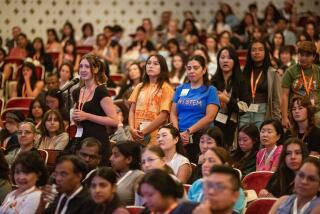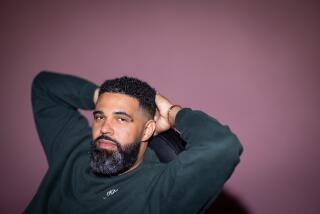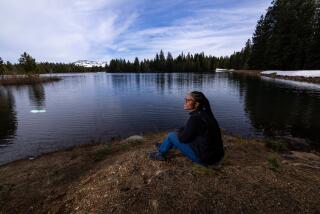BALDWIN HILLS : Science Program Targets Black Youths
Hal and Bettye Walker believe that for black children to seize control of their futures, they must shoot for the moon.
The Walkers are not speaking metaphorically.
The retired laser scientist and his wife, an educator, say black children must be educated about not only space travel, but the fast-moving world of science and technology that has brought about everything from space shuttles to laser disc players.
It is the lack of emphasis within the black community on such knowledge, the Baldwin Hills couple say, that prompted them to recently open the Science and Discovery Learning Center at 3639 La Brea Ave. Through discussion, reading and lab work, the Walkers aim to demystify science for black youngsters and make it as real to them as Nintendo.
Hal Walker Jr., who developed laser equipment for Hughes Aircraft that projected images of the moon back to the Earth during the 1969 Apollo moonwalk, says it is time that blacks focus on the importance of science to their progress as a people.
“I believe that we have to pursue using technology as a solution to social problems,” said Walker, 60, who is being honored with an exhibit at the Smithsonian Institution’s National Museum of American History in Washington that commemorates the moonwalk. The Baldwin Hills Crenshaw Plaza also is honoring him with an exhibit.
“We’re breaking from black grass-roots traditions by not emphasizing giving people jobs to survive. This is about building an information base we haven’t historically had.”
Bettye Walker, a retired teacher and educator with the Compton and Los Angeles school districts, echoed her husband’s conviction that the key to the future is involvement in technological advancements.
“The answer to all our troubles is technology. We have to make technologists,” she said. “And we have to start doing it early.”
At the center, an airy five-room office space, children can learn how to use a computer, assemble simple robots, participate in roundtable scientific discussions and watch a slide show on the properties of laser light.
“This is good because it’ll help me become an inventor,” said 8-year-old Benar Arlain, outfitted in a red center T-shirt emblazoned with the slogan “Passing the Torch.” “I like science. I know a lot of guys who want to be in this.”
For now, the more than two dozen participants are all boys between the ages of 4 and 17, members of the African-American Male Achievers Network (A-Man), a nonprofit mentoring group formed two years ago by the Walkers that is a continuation of a pilot black mentoring project funded by UCLA.
The activities of the group took a scientific turn last year when, during a trip to the U.S. Space Camp in Florida, Hal Walker realized virtually no black youths were participating except for the A-Man group traveling with him and Bettye.
“It really got their attention, especially the simulators that had them walking on the moon, moving through zero gravity,” Hal Walker recalled. “It makes such a difference in interest level when you can see things close up. I thought: ‘We need to make our own camp.’ ”
The newly acquired space on La Brea, between the shuttered Baldwin Theater Complex and a mini-mall, practically fell out the sky: the couple were searching for an office after having to vacate temporary quarters at King-Drew Medical Center.
At Bettye Walker’s behest, the La Brea property owner agreed to give them the space rent-free for three months, saving the Walkers $6,000.
The couple hope to generate enough corporate and community interest to keep the office. All of their office furniture, scientific equipment and computers were donated.
All of this, they say, is not so much to groom technology wizards as to expose a generation of black children to air that is too often perceived as rarefied.
“Look, we’re not looking to create 1,000 scientists,” said Hal Walker. “Just one. But the key thing is getting the young people to spread the word.”
Information: (213) 296-1182.
More to Read
Sign up for Essential California
The most important California stories and recommendations in your inbox every morning.
You may occasionally receive promotional content from the Los Angeles Times.









